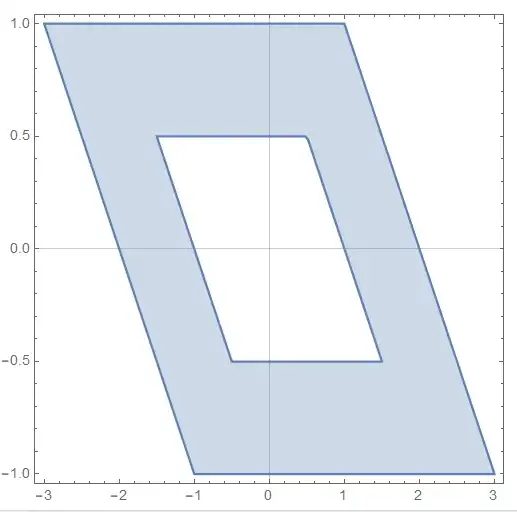Well, if you're looking for a plot:

Now, if we want to find the area of the part where $y\ge0$ and $x\ge0$, we can take a look at the following picture:

We can find the shaded area by finding:
$$3\cdot\left(\int_0^\frac{1}{2}\left(1-x\right)\space\text{d}x-\frac{1}{2}\cdot\frac{1}{2}\right)+\frac{1}{2}\cdot\frac{1}{2}+\int_1^2\left(2-x\right)\space\text{d}x=\frac{9}{8}\tag1$$
And the place where $y\ge0$ and $x\le0$, we can take a look at the following picture:

We can find the shaded area by finding:
$$3\cdot\frac{1}{2}\cdot1+\frac{1}{2}\cdot\frac{1}{2}+\int_0^\frac{1}{2}\left(1-x\right)\space\text{d}x-\frac{1}{2}\cdot\frac{1}{2}=\frac{15}{8}\tag 2$$
So, the total area is given by:
$$\mathscr{A}=2\cdot\frac{9}{8}+2\cdot\frac{15}{8}=6\tag3$$



